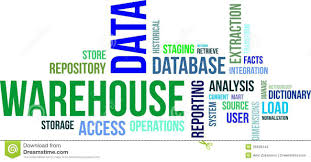
Why 'logical data warehouse' is no longer a logical term
 Consultant Rick van der Lans contends that data warehouses are inherently logical and don't need to be qualified as such. What really matters, he says, is that they present an integrated view of enterprise data, no matter where it's stored.
Consultant Rick van der Lans contends that data warehouses are inherently logical and don't need to be qualified as such. What really matters, he says, is that they present an integrated view of enterprise data, no matter where it's stored.
A pleonasm is an excessive use of words or redundant phrasing. "Logical data warehouse" qualifies as a pleonasm because present-day data warehouses can be developed as logical data warehouses as a matter of course. Let me explain what I mean.
"Logical data warehouse" was introduced as a term by Gartner. Since then, it has been used by many others, including myself. The idea is that a data warehouse doesn't have to be one physical database. It can be a heterogeneous set of data sources that each contains a fragment of the data end users need for business intelligence, reporting and analytics applications, but it presents itself to them as a single data source. So, the logical data warehouse is a system architecture that pretends all the data is stored in one big database.That is different from how the data warehouse was introduced in the 1990s.
Historical data historically kept together
Over the last 20 years, most data warehouses were implemented according to these definitions. Companies went that route primarily because of the hardware and software technology that was available to them. It was necessary to store all the data in one place in order to develop a fast and efficient data warehouse. Designers did their best with the limitations of contemporary technologies.
But now hardware and software technology has progressed. Technologically, there is no longer any need to store everything in one database to present an integrated view to users. For example, mature data virtualization servers now offer advanced data federation and on-demand data integration capabilities that can make multiple data sources look like one big data warehouse, regardless of whether they're SQL databases, Hadoop clusters, NoSQL systems, cloud-based applications or Web services.
I think we can all agree that a data warehouse should supply users with the right data at the right time and at the right quality level to support effective business decision making. It's of secondary importance where all that data is stored, as long as the data is easily accessible and an integrated view of it is presented. That makes the data warehouse a logical concept, not a physical one.




